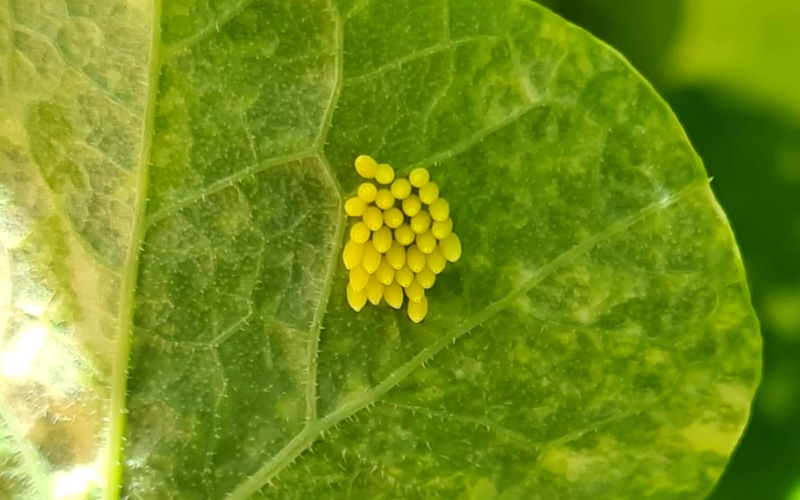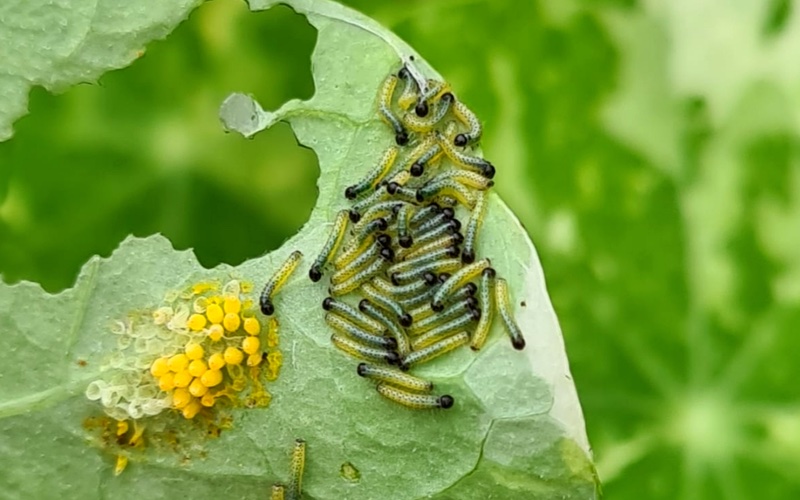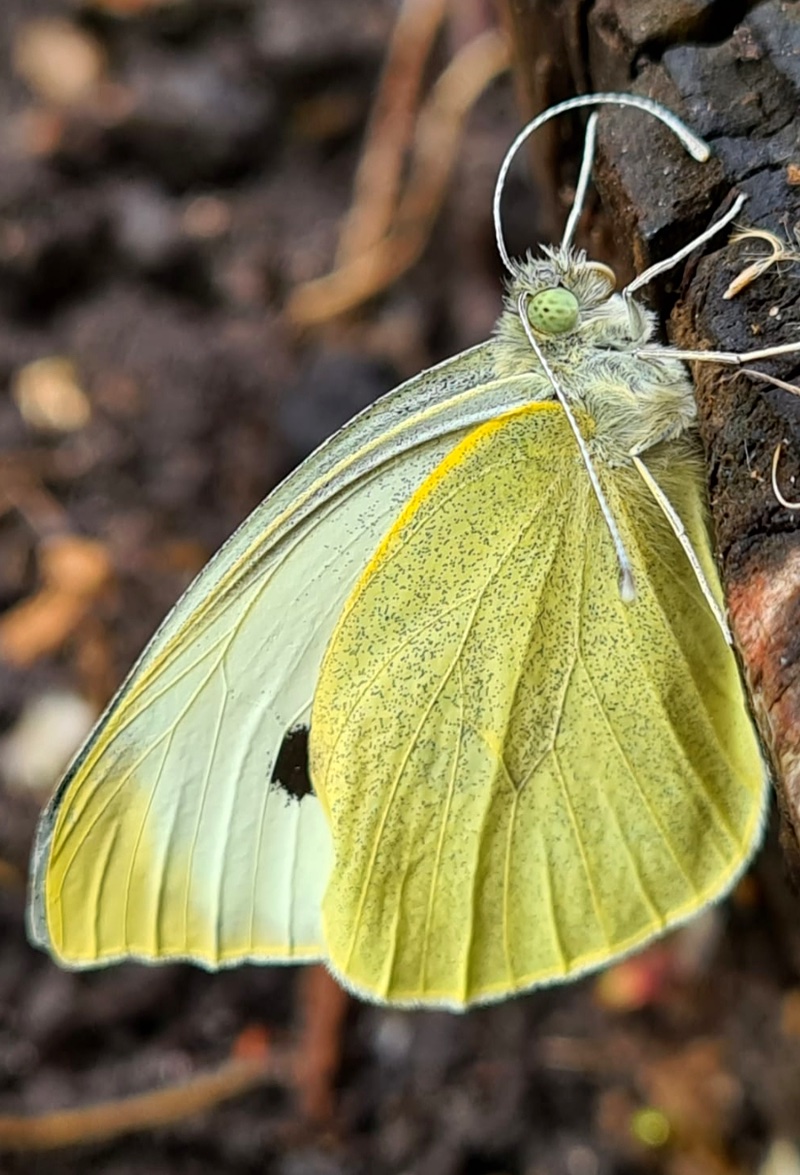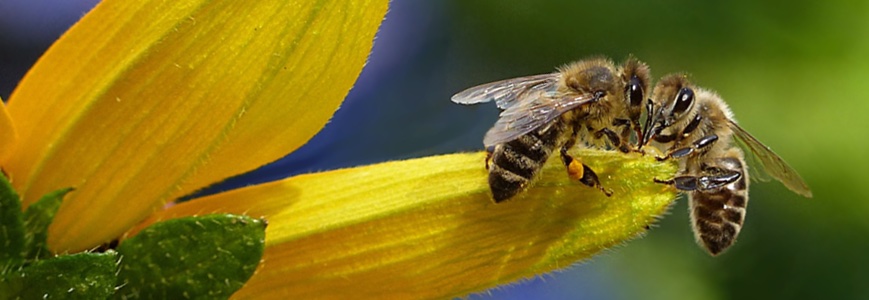THE LANDSCAPING SOLUTIONS BLOG
Welcome to our Blog. Inspiration, updates and industry trends from the team at Landscaping Solutions.
NATURE’S SPOILS
Landscaping Solutions MD Ben West details the ‘rewilding’ of his own garden, from which he, his family and the local wildlife have already reaped rewards.

Rewilding your garden greatly benefits local wildlife.
Last month, we explored the concept of rewilding as an antidote to biodiversity loss and mitigation against the most damaging effects of climate change. I promised to share a snapshot of my garden’s ‘rewilding’ journey, which has so far consisted mainly of adopting a more relaxed attitude to maintenance practices and allowing ‘weed’ species to establish alongside ornamentals.
This approach has greatly benefitted local wildlife and helped my family develop a deeper connection to nature. Through learning the traits and practical applications of the various wild plants that have taken up residence, they have a visceral understanding of nature’s interconnectedness and their place therein. Modern life lived through these eyes is a blessing and a curse. There is truly never a dull moment.
Early in the year, hairy bittercress, dandelion and sow thistle add cleansing and nutritional value to our salads. We rejoice in the emergence of wild garlic and include it in all our cooking. Bright rays of flowering coltsfoot attract the first insects of spring such as the intriguing bee fly. Flowering ground ivy, herb robert and white dead nettle provide uplifting herbal teas.
Moth caterpillars start to show with angle shades feeding on self-seeded buddleia and broad- bordered yellow underwing hiding amongst patches of Cleavers. This plant epitomises the rising of the sap and we drink its juices to cleanse our lymphatic system and shift our metabolisms out of their winter torpor.
Orange tip butterflies are attracted to garlic mustard and we share their caterpillars’ liking for its leaves. They also lay eggs on cuckoo flower which lends a wasabi kick to our salads. Nettles have become a staple food now. Full of nutrients, they combine with fresh vegetables to form the basis for our favourite soup and also feed the larva of the Vanessid butterflies; Red Admiral, Small Tortoiseshell, Comma, Peacock and Painted Lady. Their split stems are weaved together to form cord from which trinkets are dangled from children’s necks and wrists.
Bird nesting begins in earnest and our ivy clad fence is well appreciated. Swift boxes set in the brickwork of our gable end fail to attract their target species but are taken up by house sparrows which enjoy the seeds of self-sown oxalis in the borders. Their constant chattering, at odds with the melancholy flute of the blackbird and the quicksilver outpourings of the blackcap in the willow, form the soundtrack to summer.
We embrace unloved elder by making refreshing summer drinks with its flowers and later medicinal syrups with its berries - blackbird and blackcap love it too. The plants that attract the most life are those that have found their own way here, none more so than the much maligned ragwort which is the centre of all insect activity throughout its long flowering period. Burnet companion, mother of pearl and cinnabar moths (and their caterpillars), gatekeeper and meadow brown butterflies and a host of parasitic wasps, hoverflies and bee species are in constant orbit.
I let fade away anything that fails to fend for itself and allow survivors to thrive; purple toadflax is one such survivor and attracts streams of bees through summer including the charismatic wool carder bee. By night, it is festooned with mother of pearl moths and garish toadflax brocade moth caterpillars. The almost identical larvae of the mullein moth can be found feeding on the foliage of its self - seeded namesake alongside pupating ladybird larvae. Shield bugs are up to no good in the shadows; stag beetles stick to the bricks of the house and demoiselles, damselflies and dragonflies clatter through the deepening foliage.
All life is here amongst these summer weeds. Wild medicinal herbs turn up and are infused to make teas: yarrow for sore throats, plantain for coughs, fennel for digestion and mugwort for lucid dreaming. Others are harvested and preserved in alcohol as tinctures to last through the winter: dock root, St John’s wort flowers and prickly lettuce leaves will treat everything from excitability to lethargy. Prickly lettuce also provides food for small ranunculus moth larvae. The reviled creeping thistle is a great nectar source for late summer insects and now attracts brown hairstreak butterflies to the garden. Grass snakes slither into the compost heap to lay eggs and hunt for rodents.
Moth numbers are peaking and a trap set up at night is a revelation. We are dazzled by the diversity of colours, patterns textures and forms. As summer flowers fade into autumn, dark bush crickets continue to fill the night air with whispering chirrups. At this time, ivy comes into its own. Its late emerging flowers are a major fuel source for insects. Stand beside a spunk scented spray on a sunny day in early autumn to see insect theatre play itself out before you. We really must regain our reverence for this plant.

Large white butterfly eggs.
One image of the unfurling year sticks in my mind. In the spring, I scattered nasturtium seeds in the corner of a raised planter and the rapidly developing foliage became a welcome addition to salads and pesto. Large white butterflies came to lay eggs on the undersides of the leaves. A great life lesson in lockdown for the kids as we observed the eggs through to the larval stage.

Emerging caterpillars on the underside of a nasturtium leaf.
The kids liked the fact we shared the caterpillars love of the peppery vegetation. As they dispersed to pupate, we searched for, and found, a cocoon and marvelled as the emerging imago pumped up its wings and flew away to continue the cycle.

Large white adult Imago.
I wonder if, by embracing rewilding, we are like the caterpillar that, having stripped its food- plant bare and seemingly painted itself into a corner, now undergoes a strange and remarkable metamorphosis to emerge as a useful enhancement to the ecosystem and a jewel for the eye.
One thing is for sure; if the garden had been weeded, much of this richness of life would have been lost and never had the chance to enrich our lives so profoundly.
You can continue to follow Ben’s journey on Instagram: @wearewherethewildthingsare
THE BUZZ SURROUNDING BEES

The Scottish government has launched a new “pollinator strategy” in an attempt to halt the rapid decline of pollinating insects such as honey bees, bumble bees and butterflies.
When compared to previous figures, the evidence suggests that the health and abundance of bees and other pollinators throughout the UK is dwindling at an alarming rate.
Since the 1980’s the number of pollinating insects in Scotland alone is estimated to have declined by a staggering 51%.
By setting out an ambitious 10-year plan the new pollinator strategy aims to make Scotland a more pollinator friendly place.
As part of the strategy homeowners and commercial landscape gardeners are being urged to plant pollinator-friendly plants in their gardens. Owners of flats and offices are also being encouraged to create rooftop, balcony and window-ledge gardens, with the specific aim of boosting flower-rich habitats by making better use of our urban infrastructure. In addition the strategy also proposes the development of bee and butterfly-friendly pest control as well as new research into the impact of climate change on pollinators.
It’s no secret bees are facing tough times and its a subject matter not without it’s fair share of media attention. Back in October last year we did a piece on the Landscaping Solutions blog covering their plight (Bees In Crisis) and there has also been plenty of publicity urging gardeners to grow flowers that attract bees and butterflies to their gardens.
Though undoubtedly this is all a step in the right direction, successfully reversing the decline is going to be no easy task. Planting a lot more flowers is not necessarily going to solve the problem as there is no clear cut answer as to why pollinating insects are under such threat.
Circumstances affecting the honeybee are different to those affecting bumblebees. Some species of bumblebee are actually doing well and have increased their distribution across the UK. These are mainly species that are able to collect nectar and pollen from a wide range of plants, including garden flowers.
Other species on the other hand are more selective in their flower-visiting routines and with the gradual loss of their natural habitats have shown a marked decline in population. Over the last 30 years 3 different species of bees have become extinct due to these circumstances, with many more dangerously close to extinction.
A recent study at the University of Sussex found that the majority of garden flowers advertised as bee-friendly are relatively useless when it comes to attracting pollinators. In fact the most effective insect-friendly plants are not the ones being recommended by garden centres.
Thankfully the Royal Horticultural Society currently features a comprehensive list on their website of ‘Perfect for Pollinators’ plants which can be viewed here.
As mentioned, pesticides, pollution and climate change also play their part in the decline of pollinators. If we are to safeguard our environment and eventually help to turn the tide on the decline of these vital insects, the key to the success of strategies such as this will lie in the further research and a clearer understanding of our countries delicate ecosystems.